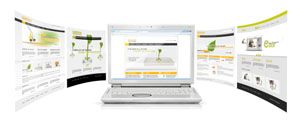Key Elements of a Good Website


There are several factors that go into making a successful website. Besides its use, the appearance and user-friendliness are the most important factors that help make a website popular.
Significant Features of a Good Website
Content
The most important element in any website is good content. Your content is the reason users visit your site. If it is superficial or badly written, you can be sure that they will leave fast and won’t come back again. The copy for your website should be well framed and helpful Truthful information about your company, products, services, etc is a must. Information one must not forget to include is an ‘about’ page as well as contact information. The important aspect to keep in mind here is to provide information that is going to be useful to your user. Also, ensure that the content on your website is updated and does not contain any grammatical or spelling mistakes, for it is a direct reflection on your company’s image.
Visual Appeal
We all know what they say about first impressions, and this school of though extends to websites too. The decision to go through the content of a website is likely to be based on how a visitor responds to its appearance. Your website design should be clean and simple, but all the same – eye-catching. A tasteful website isn’t flashy. Blinking letters and flashing pictures are disturbing, and will turn away most readers instead of attracting them. They also make it a lot harder to read the information provided, which can be quite irritating for the user.
User Interface
A good user interface is another key element of a good website. The user interface should be the kind that an average user will find easy to use, and enable him or her to find whatever they want with ease. Part of this includes well-planned major (top level) categories, navigation that is easy to spot and consistent throughout the website. One way to achieve this is to have links to the key areas of your site in the top half of your website. This layout should remain consistent throughout the various pages. A good user interface will offer the same options in the footer, or even a few extra links. Larger websites with lots of pages should have a site map.
Content Layout
A big mistake is to place text over backgrounds, for it makes reading difficult. Dark background colors do not make reading any easier. Studies have shown that black text on a white background is the best combination for reading and remembering. Large blocks of text should be split up into paragraphs containing 4-5 sentences. Ensure that your page contains sufficient white space, for clarity and neatness. Every page should have the same margins. There should be consistency throughout the website, so only one set of fonts, colors and layout should be used on all pages. On element that annoys most users is multiple scroll bars. Keep them at a minimum and try to avoid the side-to-side scroll bars.
Search Tool
Good websites containing many pages have a search field to assist their readers. This feature is very helpful, and enables potential customers to find whatever they want with ease. One can make use of use a Google Search on their site, or WordPress (or another blogging platform or CMS / Content Management System). It will be a little more challenging with a static html site, but there are services available that will let one incorporate a functional search box onto their site.
Separate Design from Content
The best developed sites on the Internet combine the use of XHTML and CSS (Cascading Style Sheets), which create a separation of design vs content. Among its many advantages are that one has to update just one CSS file to see the change implemented site-wide. Also this separation of content from design will result in quick loading (search engines will no longer have to go through excess code to find out if the content is relevant).
On the same note, minimize your utilization of flash animations, music, or video or anything that is going to make your site take a long time to load. Web surfers have very little patience and a short attention span.
Cross Browser Compatibility
Another key element of a good website is that it displays well in as many of the mainstream web browsers as possible and is also compatible across platforms. Although most Internet users utilize Firefox, you don’t want to leave out those using Internet Explorer and the other few browsers. Also, the success of your website can be hinged on how well it is optimized for search engines.
Web Optimized Images
Good picture quality on a website instantly leaves a user impressed. Most people save all their images in a compressed format. So be careful while doing this as your images will appear pixelated when you upload them on your site.
These are just a few key elements that a good website has. With constant innovations in technology, there are always new ways to improve your website. So keep your knowledge and website, updated!

